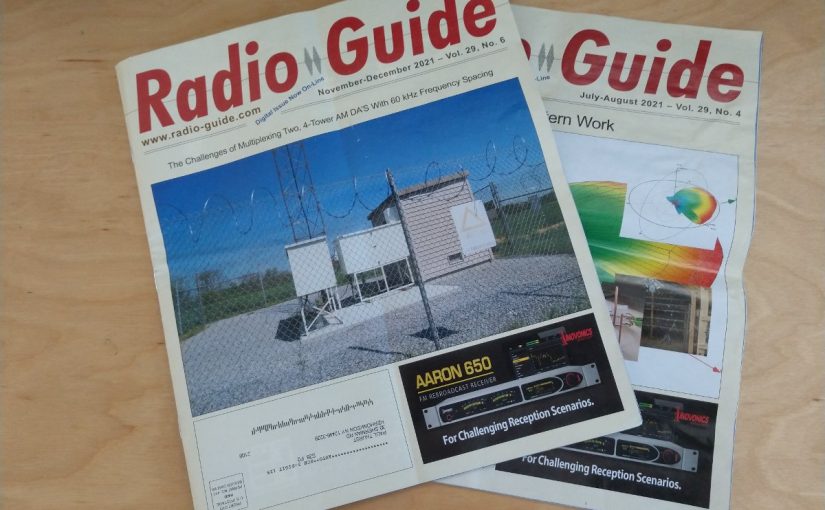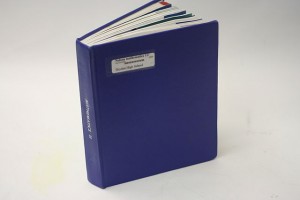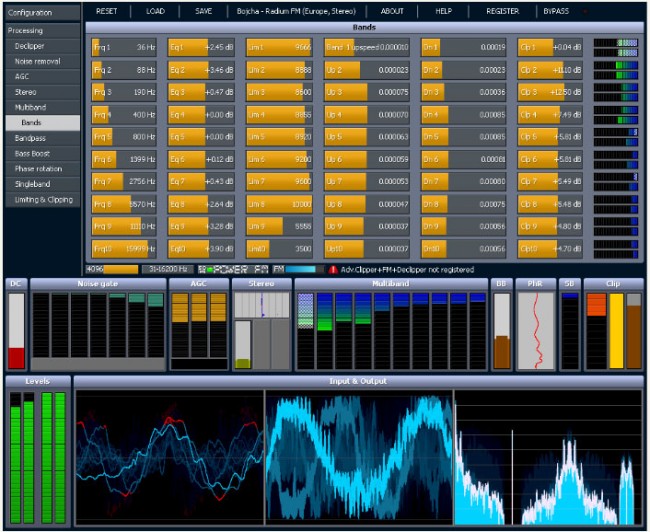As some of you may have noticed, recently I have been writing some articles for Radio Guide. There are several good reasons for this, but the most important one is education. I believe that terrestrial radio will be around for a few more years. As others have noted, there are fewer and fewer broadcast engineers. Those that understand high-power RF and all its intricacies are fewer still. It is important that a cadre of knowledgeable broadcast engineers carry on.
The internet is a great thing. However, it depends on cables of some type to exist. As we know, cables can be damaged. In addition to cables, there are routers, core switches, servers, and so on. All of that equipment can fail for various reasons. People have been working hard to improve the resiliency of the internet. That is a good cause, to be sure. However small it may be, there is still a chance that the internet can fail. Worse still, this can happen during some type of natural disaster or other emergency. Thus, during such an emergency, Radio can and will function as a vital information source provided that the station is on the air and has a program feed. That is also a good reason to keep the current RF STL paths in place as much as possible.
The Radio Guide articles are a great way to pass along some of that hard-earned experience to others. I also want to put supplemental information here for those interested to download. Things like charts, forms, pictures, videos, etc.
What I am planning on is to list the articles here, then put links to any supplemental information provided below that subheading.







Appreciate the heads-up on this magazine. I had not heard of it. It is duly bookmarked. The articles I scanned looked nicely written and of interest to me, at least. I’m in space comm operations nowadays, but broadcast and particularly MF/AM stmulates my old AFCC facility engineer thinking cells.
Congrats, Paul. I’ve written articles on occasion for publications ranging from Radio World to Popular Communications and CQ, among others. It’s great to spread knowledge to the electronics and broadcast engineering communities. Who knows, maybe you’ll inspire someone else to share their own personal knowledge to further the education of others. It seems the biz is leaning more toward the I.T. guy while those with good RF knowledge are becoming a dying breed. This is one reason I thoroughly enjoy reading your blog.
“…a good reason to keep the current RF STL paths in place as much as possible.”
There’s a lot of places where wired and wireless systems are running that we just don’t think about, and would be in a world of hurt if they went away.
I was recently reading about a local bridge, the Spokane Street Bridge. It’s a novel and unique drawbridge design that is holding up pretty well in comparison to its big sister that has been closed for the last two years to address failures that could bring it crashing down into the waterway.
The thing that struck me was that the bridge has to communicate with both sides of the crossing, and it does that with /wires/. Those wires don’t go under the water — they go across it’s sister bridge. The same bridge that is at risk of collapse. If the upper bridge fails, and does so in a way that doesn’t damage the lower bridge, it will still make the lower bridge unusable by breaking all its communication lines.
Long story short: Disaster planning would seem to require someone who still knows how to hack together wireless communication system in the event of an emergency. I have to imagine someone who knows how to maintain an STL would also be a priceless resource in a post-earthquake Seattle.
https://www.seattle.gov/transportation/projects-and-programs/programs/bridges-stairs-and-other-structures/bridges/west-seattle-bridge-program/spokane-st-swing-bridge-improvement-projects
Bridge wires are critical! Take a look at the Albany-Rensselaer railroad bridge. It opened on February 18, 1866. The bridge is still in service. The wires are on towers above the bridge.
https://en.wikipedia.org/wiki/Livingston_Avenue_Bridge
Good Morning. Pls see link: https://www.theguardian.com/media/2022/mar/04/bbc-website-blocked-in-russia-as-shortwave-radio-brought-back-to-cover-ukraine-war
It does prove how right you are, Paul.
Stay well, Ian.
Bulgaria BG.